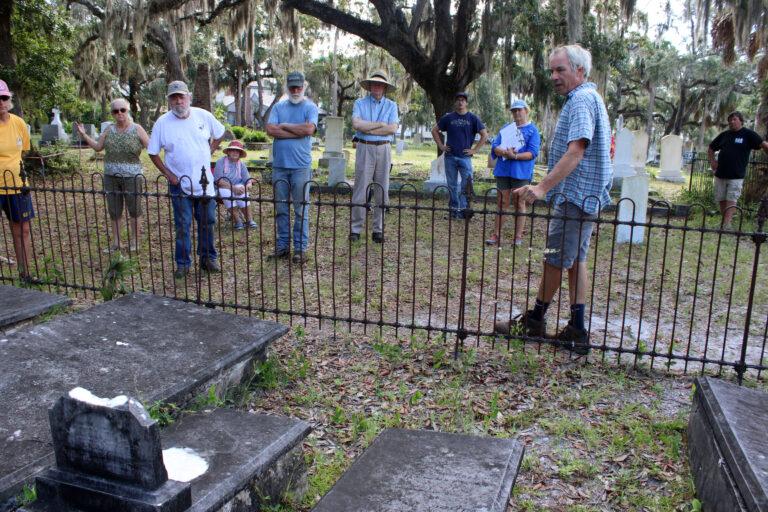Legacy Post Disclaimer
This is a #Legacy post imported from The Apalachicola Time’s previous platform. If you’re experiencing issues with this article, please email us at news@nevespublishing.com.
Islanders unveil proposal for incorporation
Carrabelle in 1881 became the second town in Franklin County, Apalachicola had incorporated itself 50 years before that.
By the end of 2022, St. George island could become the third, by a vote of the people, in a free and fair election.
That is, if a working group of island residents, focused on the subject for a while now, offer a convincing case for doing so.
“We are a fairly good-sized group of individuals living on the island with various backgrounds and levels of experience. We are not affiliated with any existing group," said Julie Krontz, a spokesperson for the group.
The group has a website http://townofsgi.com/ and plans are now in the works for a guided discussion online on Wednesday, Feb. 10, led by experts from Florida State University who have volunteered to provide guidance to the ad hoc group, that began its work at the end of 2019.
Details on how to access the guided discussion online will be announced shortly.
While there are plenty of details on the website, the idea for this initial discussion, to be held in two sessions on Feb. 10, is not to debate specifics, but to get an overall sense of how islanders feel about their community.
“What do they love about St. George Island? Where are problems, where are concerns?” Krontz said. “What we want first is to hear what people have to say. We want to get as many people involved in those meetings as we can.
“We are not in a position to discuss specific topics,” she said. “We can’t do that. We’ve been trying to articulate that if we become incorporated, we can make decisions for ourselves.”
In addition to making sure the ad hoc effort is not affiliated with any particular group or organization, Krontz said the working group is not directly connected to a short-lived effort in 2015 towards incorporating the island, which ended without success..
“They had discussions about doing it mainly for zoning,” she said. “They didn’t have a solid group and it kind of fell apart.”
This time around, the working group has met weekly and enlisted help, all so far from volunteers, of an attorney well-versed in the subject, a financial analyst, a website guru, Florida State University urban planners, the League of Cities, other municipalities that have gone down a similar road, and local organizations, as well as permanent and temporary residents of the island.
The group has sat down with three of the five county commissioners, with Smokey Parrish and Noah Lockley slated for the future.
“It’s a very diverse group and we’ve accomplished a lot,” said Krontz. “We have been meeting on a weekly basis. We have pulled this together by leveraging who had the background to be able to help. We estimated it would costs us $100,000 if we couldn’t pull together.”
Topping the agenda is putting finishing touches and sharing a feasibility study, a charter and a detailed budget.
The group knows that specific numbers will be essential when the time comes to ask the Florida Legislature for its blessing, as well as that of island property owners, who will have the final say over whether to give a thumbs-up, or thumbs-down.
Website presents its case for becoming a town
On the website, the group makes clear that rapid growth is a key factor behind their push for incorporation.
“The island’s desirability has brought not only new residents and visitors, but also investors whose interests may not be in line with the way of life that we residents want to preserve,” it reads. “Unmanaged and unplanned development has a negative impact on the island. It’s time for the people who are invested in preserving our island to take action to protect our environment from outside influences.
“Low-density zoning and strict building codes have been eroded as developers look to change the character of the island. Lack of political representation makes St. George Island vulnerable to additional change being driven by financial gain rather than the best interests of the community,” it continues. “Our tax dollars are not reinvested on our island leading to crumbling infrastructure. The island’s basic infrastructure and recreational amenities are a poor reflection of our strong, vibrant community.”
The website says “community groups of volunteers on the island have worked for years to make incremental improvements in the infrastructure and amenities on (the island), but lack of political representation has been a perpetual obstacle.
“The best way to protect the island’s natural environment and small-town character, while pursuing long-term goals for a thriving and inviting central business district, is to take the next step forward by incorporating as a self-governing town,” it says.
Specific goals of the effort, reads the website, is to stop granting waivers and exceptions that are allowing high density housing in the commercial district, maintain low density housing throughout the residential district, improve environmental stewardship to protect sea turtles and dark skies, and to protect “the unique, laid-back, uncrowded, small-town character of St. George island.”
The website goes on to says that it supports a comprehensive plan to support current and future locally-owned businesses, to make the commercial district more walkable and to improve parking for residents and visitors.
In terms of public safety, incorporation would include fully supporting the fire department with needed training and equipment, adding beach patrols and warning systems and increasing law enforcement throughout the island.
It also says the move would help in the repair of “crumbling infrastructure,” address flooding and drainage issues, fix dangerous road conditions and faded signage, improve an “unsafe boat launch,” and maintain and repair public restrooms.”
The working group is proposing a council-manager form of government, with a five-person town council and a full time, professional town manager. The town council would be elected at large, island-wide, with the town supervising a small staff handling town administration, zoning, permitting, maintenance, and safety.
It says seasonal workers in the summer can help address issues with traffic control, parking, and litter on the beach, with the town hiring private vendors for large projects like road work. Law enforcement will continue to be provided through the sheriff’s office, with the town coordinating with the sheriff for improved coverage by deputies, it reads.
The volunteer fire department will be funded with the same flat non ad-valorem tax, known as the municipal services benefit unit, on all properties on the island that is currently assessed by the county.
“The town council may also use general tax revenues to support the department’s needs,” it says. “The sample town budget includes additional resources for the volunteer fire department for training and equipment.”
In terms of taxation, the working group is proposing a tax rate of 3 mills, less than one-third the rate of either Apalachicola or Carrabelle.
That budget, they say, would cover the costs of hiring staff, and investing $7 million in capital improvements in the first five full years, and putting away $2 million in reserves after five years. This tax is expected to cost a property owner with $100,000 of taxable value $300 annually, and $750 for property valued at $250,000, $1,500 for $500,000 properties and $2,250 for properties valued at $750,000.
The proposed timetable
January/February 2022
Incorporation legislation considered by Florida legislature
May 2022
Citizen referendum on incorporation
November 2022
Election of first town council
December 31, 2022
Town is legally formed
This article originally appeared on The Apalachicola Times: Islanders unveil proposal for incorporation





Meet the Editor
David Adlerstein, The Apalachicola Times’ digital editor, started with the news outlet in January 2002 as a reporter.
Prior to then, David Adlerstein began as a newspaperman with a small Boston weekly, after graduating magna cum laude from Brandeis University in Waltham, Massachusetts. He later edited the weekly Bellville Times, and as business reporter for the daily Marion Star, both not far from his hometown of Columbus, Ohio.
In 1995, he moved to South Florida, and worked as a business reporter and editor of Medical Business newspaper. In Jan. 2002, he began with the Apalachicola Times, first as reporter and later as editor, and in Oct. 2020, also began editing the Port St. Joe Star.